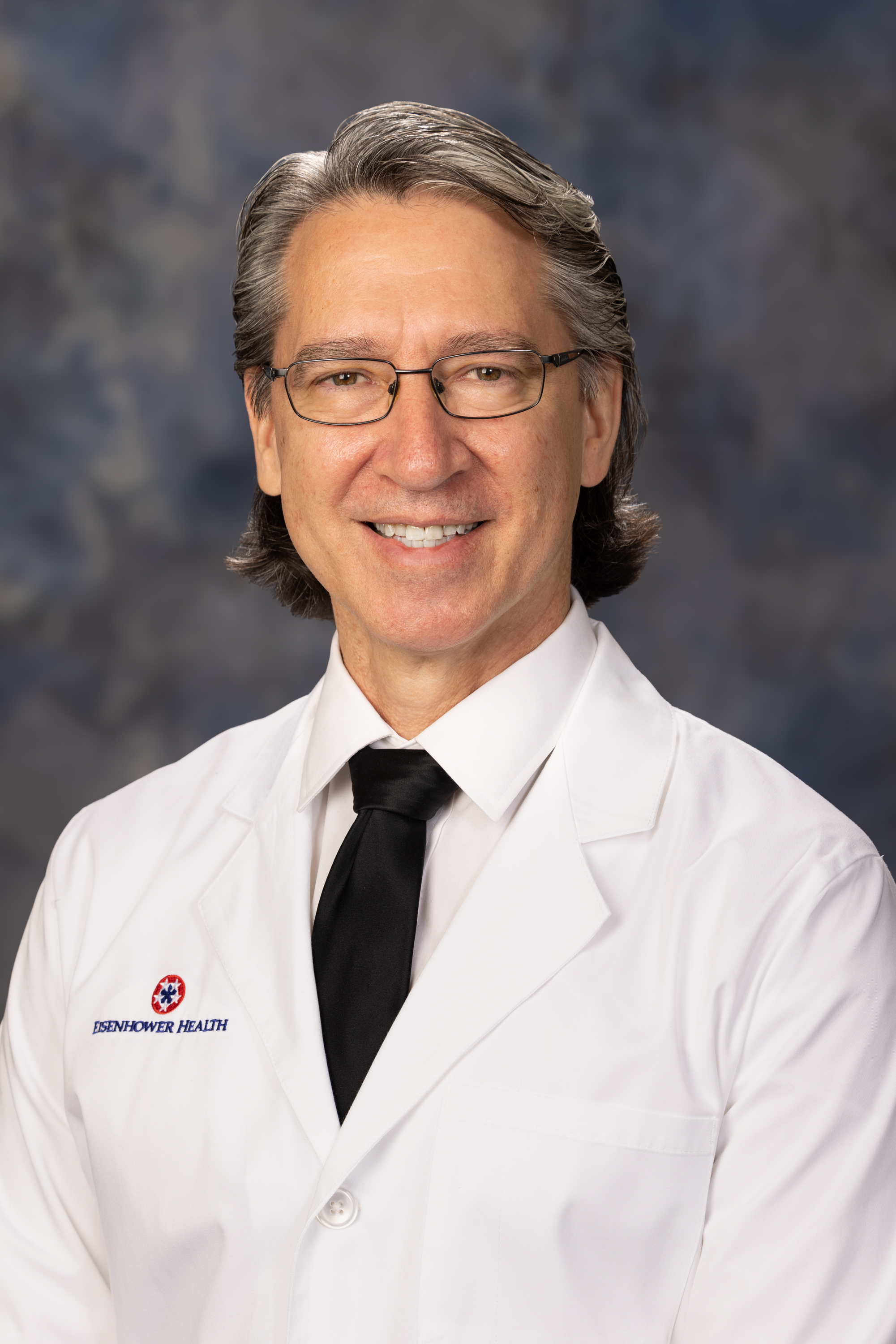Common Golf Injuries, Recovery and Prevention
With over 30 years of experience in physical therapy, Ken Zaparinuk is a board-certified orthopedic specialist who oversees the Physical and Occupational Therapy Program at Eisenhower Physical and Occupational Therapy in La Quinta, California. Throughout the Coachella Valley, Zaparinuk has worked with country club golf professionals and seasoned amateur players alike. When it comes to golf-related injuries, he's seen just about everything.

Golf injuries that occur often
"The most common issues I encounter are aging spine injuries and shoulder impingement on the non-dominant side—for example, a right-handed golfer developing bursitis or tendonitis in the left shoulder," Zaparinuk explains.
The second most common are in the hip and knee on the non-dominant side, such as hip osteoarthritis, and damage to the labrum (the cartilage that protects the hip socket), as well as meniscal tears in the knee.
Zaparinuk adds that golf injuries are common at any level—spine, shoulders, elbows, wrists, hips and knees and are usually related to repetitive motion.
A safer swing starts with smart mechanics
Great posture, a well-designed swing, and strong core stability with flexibility are essential for injury prevention in golf. These fundamentals help protect the body from common issues like bursitis and tendonitis. On the flip side, poor posture and faulty swing mechanics can put serious strain on the neck, shoulders and low back, increasing the risk of joint inflammation.
"Often, golfers develop poor body mechanics because they got good results from a flawed swing," says Zaparinuk. "The challenge is changing a swing that's causing harm. That's where collaboration comes in—physical therapists can help manage the injury, and golf pros can help adjust the swing. Bringing both together is the key."
Essential preparation before every game
Zaparinuk half-jokingly relates the common "Coachella Valley golf warm-up"—rolling out of bed, grabbing a cup of coffee and a bagel and putting your clubs in the cart, driving to the course, taking out the driver, performing two practice swings and then beginning to play.
"Warm-up is extremely important in any sport to prevent and decrease injuries, and you can find endless combinations of training from certified instructors on the Internet or YouTube."he says. "The condition of your body and your level of performance will dictate the intensity."
Among his recommendations:
- Starting with slow, general motions for the spine, shoulder, elbows, wrists, hips, knees and ankles to start
- Performing low intensity motions to stimulate core, lower and upper extremity muscle activations to prepare them for common movement patterns.
- Doing graded, sport-specific motions, i.e., a variety of swings starting with limited arcs and slower speeds progressing to larger arcs and higher speeds.
- Preparing your mind for focus but also enjoyment.
Treating pain and the recovery process
Repetitive sports motions are a common culprit when it comes to overuse injuries. For golfers who begin to feel discomfort, Zaparinuk recommends resting and icing the affected area for the first 72 hours. After that, re-evaluate your pain level before turning to medication or heading back to the range or course.
Many players who visit Zaparinuk for injuries such as golfer's elbow or back strains are also managing other health conditions—cardiovascular issues, diabetes, osteoarthritis, past surgical repairs, or even lingering injuries from military service.
If caught early, golfer's elbow can heal in as little as three weeks. Without proper rest, though, recovery may stretch out to nine months. Back strains are often more complicated. A significant strain may take 8 to 12 weeks to heal, while minor strains typically resolve in 4 to 6 weeks. The underlying condition of the spine and discs plays a major role in recovery. Managing the frequency, intensity, and duration of physical activity is key to avoiding long-term damage. The ultimate goal is a safe return to golf—without risking catastrophic tissue failure.
"We don't want anyone tearing a rotator cuff or injuring a disc by rushing the process," says Zaparinuk. "Exercise should be based on how the body responds. If mobility and strength are improving and pain is decreasing, we gradually increase the load."
When easing back into the game, he advises patients to be ready to walk off the course at any time. Some of his golfers started by playing just three holes at a time, slowly working their way back to a full 18.
Injury prevention and long-term wellness
Zaparinuk's top advice for avoiding golf-related injuries centers on a well-rounded fitness routine. That means incorporating cardiovascular activities (like walking, biking, or swimming), flexibility work (such as yoga, general stretching, or golf-specific stretch classes), and sport-specific strength and conditioning—including HIIT, resistance training, Pilates, and balance/agility exercises.
Mobility training ensures your joints can move through the full range of motion needed for the golf swing. Strength training builds the muscular endurance required to handle golf's repetitive movements.
"A balance of mobility and muscle performance is key to sustaining athletes of all ages," Zaparinuk says. "It's what helps golfers stay on the course for decades."
Members of PGA WEST® and The Citrus Club enjoy access to a comprehensive selection of fitness equipment and classes conveniently located at their respective clubs.

Eisenhower Health is a not-for-profit health system, serving the Coachella Valley since 1971. With a commitment to excellence in patient care, education and innovation, Eisenhower provides a full range of medical services through its award-winning hospital, specialty centers, and primary care network. Eisenhower also provides Medical Education events for members at PGA WEST and The Citrus Club and have dedicated Liaisons from Eisenhower Health Foundation to serve as a community resource. To schedule a behind-the-scenes tour of the hospital, to experience the future of healthcare in the desert, please call 760-773-1888.

